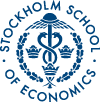No 464: Financial Innovation, Market Participation and Asset Prices
Laurent Calvet, Martin Gonzalez-Eiras () and Paolo Sodini ()
Additional contact information
Laurent Calvet: Harvard University, Department of Economics, Postal: Littauer Center, Cambridge, MA 02138, USA
Martin Gonzalez-Eiras: Universidad de San Andres, Departamento de Economia, Postal: Vito Dumas 284 (1644), Victoria, Buenos Aires, Argentina
Paolo Sodini: Dept. of Finance, Stockholm School of Economics, Postal: P.O. Box 6501, S-113 83 Stockholm, Sweden
Abstract: This paper proposes that the introduction of non-redundant assets can endogenously modify trader participation in financial markets, which can lead to a lower market premium and a higher interest rate. We demonstrate this mechanism in a tractable exchange economy with endogenous participation. Investors receive heterogeneous random incomes determined by a finite number of macroeconomic factors. They can freely borrow and lend, but must pay a fixed entry cost to invest in risky assets. Security prices and the participation structure are jointly determined in equilibrium. The model reconciles a number of features that have characterized financial markets in the past three decades: substantial financial innovation; a sharp increase in investor participation; improved risk management practices; an increase in interest rates; and a reduction in the risk premium.
Keywords: Endogenous Participation; Epstein-Zin Utility; Financial Innovation; Incomplete Markets; Multiple Risk Factors; Risk Premium; Spanning.
46 pages, August 1, 2001
Full text files
hastef0464.pdfFull text
Questions (including download problems) about the papers in this series should be directed to Helena Lundin ()
Report other problems with accessing this service to Sune Karlsson ().
RePEc:hhs:hastef:0464This page generated on 2024-09-13 22:19:41.

